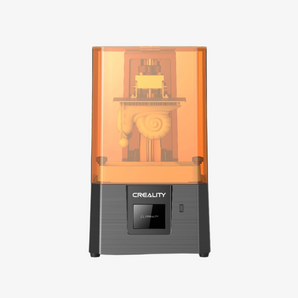Wavelength Basics: 385nm vs 405nm
-
385nm (UV-A): Shorter wavelength, higher energy. Usually sourced from UV LEDs or lasers. Offers faster curing and better resolution.
-
405nm (Near-UV/Violet): Slightly longer wavelength, lower energy. More commonly used in consumer printers due to affordability and LCD screen compatibility.

Key Technical Differences
| Attribute | 385nm | 405nm |
| Energy Output | Higher; fast surface curing | Lower; cures more gradually |
| Cure Speed | Rapid, 2–3s in advanced systems | Moderate, requires longer exposure |
| Cure Depth | Shallow; high precision | Deeper penetration; good interlayer adhesion |
| Printing Accuracy | Ideal for fine features and micro details | Lower precision; better for thick layers |
| Transparency | Superior; less light scattering | More prone to edge blur and yellowing |
| Hardware Cost | Higher; used in professional DLP systems | Lower; supports affordable LCD printers |
| Safety | Requires better shielding (stronger UV) | Safer; lower protection threshold |
| Printer Type | Common in DLP and high-end SLA | Common in LCD printers |

Application-Based Recommendations
✅ Use 385nm if you need:
-
High-resolution prototypes (e.g. microfluidics, MEMS, or dental models)
-
Transparent or optically critical parts (e.g. lenses, jewelry masters)
-
Fast curing at lower heat (e.g. silver nanowire conductive inks)
Example: In the dental industry, 385nm DLP printers enable the fabrication of crowns, bridges, and surgical guides with exceptional dimensional accuracy and smooth surface finish. Thanks to the shorter wavelength and higher energy output, the light penetrates less deeply, minimizing overcuring and preserving fine details—critical for components that must fit precisely within the human mouth.
✅ Use 405nm if you want:
-
Affordable general-purpose printing (e.g. prototypes, figurines)
-
Flexible or thick-layer parts (e.g. TPU-like materials)
-
Entry-level or educational applications where budget matters
Example: For small studios and DIY users printing cosplay parts or batch models, 405nm printers offer cost efficiency, broader resin availability, and less need for high-precision tuning.

Common Industry Questions
Q1: What happens if I use the wrong wavelength?
-
No curing: A 385nm-only resin won’t cure under 405nm light.
-
Print failures: Mismatch leads to incomplete cross-linking, weak layers, or tacky surfaces.
-
Blurry details: 405nm can cause unwanted scattering in transparent prints.
Q2: Why do some resins only work with 385nm or 405nm light?
Q3: Does wavelength affect the surface quality of the print?
Q4: How to improve success with thick prints?
-
Extend exposure time under 405nm to boost penetration.
-
Use layered curing strategy: cure outlines first, then infill, to reduce internal stress.
Conclusion: Choose Based on Use Case, Not Just Specs
| Need | Best Choice |
| High-precision & transparency | 385nm |
| General use & affordability | 405nm |
| Thick layers & bonding | 405nm |
| Short cure time & conductivity | 385nm |








































